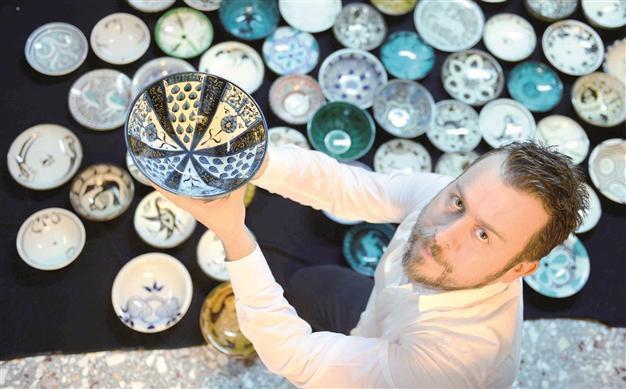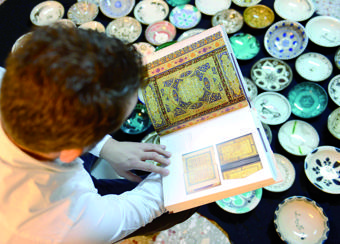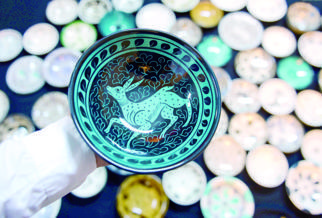Tracing the foods of the early Islamic world
BURSA - Anadolu Agency

Photos of plates from the Muslim world between the 7th and 12th centuries are included in Muhammed Ömür Akkor’s new book.
Turkish researcher and writer Muhammed Ömür Akkor, whose book “Seljuk Cuisine” was recently selected as one of the best food books in the Gourmand Cookbook Awards, considered the “Nobel Prize of cookbooks,” has completed his research titled “Islamic Cuisine Culture and Foods in the 7th Century and After.”Akkor said he had worked on the history of food for many years, beginning with Anatolian food cultures and continuing to the Ottoman and Seljuk eras. So far, his book has been translated into three languages.
He said that while working on the Seljuk period, he came across resources on the cuisine of the Abbasid caliphate era and became increasingly interested in the gastronomic culture of the Islamic world from the 7th-12th centuries.
The book, which Akkor wrote over the course of five years, is set to be published in 50 different countries in May. It will be appearing in seven languages - Turkish, English, German, French, Spanish, Russian and Arabic - and perhaps Indonesian at a later date.
 Not food recipes
Not food recipesAkkor said the book was not a collection of food recipes - but rather a sociological/anthropological study of food's role in Turkish and Arabic cultures of the time - especially for special events such as weddings, funerals, and religious holidays.
Nevertheless, the book also includes a number of recipes from the eras studied.
“The book offers 40 recipes identified from various hadiths [sayings of the Prophet Muhammad] as well as 40 other foods that have been revised. The book has 80 recipes in total,” Akkor said.
The book also contains information about the rules of hygiene and the importance of diet for Muslims in the eras.
“This is a very important detail. Both Muslims and Turks used to eat twice a day. We see that eating two times a day is very healthy, as well as fasting in the month of Ramadan. It is both a diet and a way to care for the body at the same time,” he said.
 Difference between raw and industrial foods
Difference between raw and industrial foodsAkkor said the book also explores the difference between raw foods and industrial foods.
“We can see clearly in the book the health difference of both foods. We need to choose what we eat. We have eaten the same things for the 10,000 years, but it has changed over the last 50 years. This research shows us the healthy foods we have been eating for 10,000 years,” he said.
The author also noted that plates were a very important aspect of cuisine culture at the time, and he prepared a collection of 70 plates from the region between the 7th and 12th centuries - photos of which are included in the book.
Tile masters İbrahim Kuşlu and Aysel Tuna worked with Akkor on the book and the plate collection will be on display at the book’s promotional locations.
















